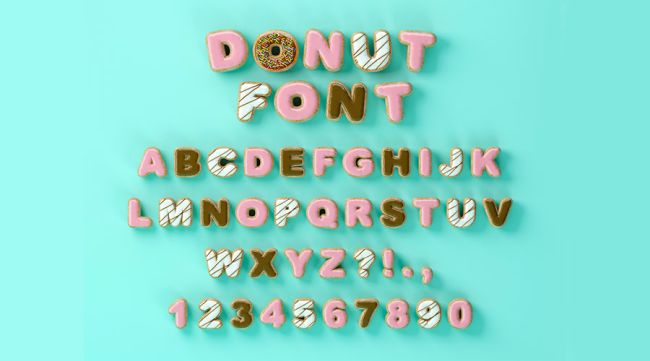Are you aware that one well-known example of how typography can build brands is the logo of Coca-Cola? Just by looking at the flowing and distinctive script of Coca-Cola’s logo, you can instantly recognize the brand and its iconic red and white color scheme. This is a testament to the power of typography in creating a strong and memorable brand identity. But how exactly does typography achieve this? How can the selection of fonts, spacing, and alignment influence the perception and recognition of a brand? In this discussion, we will explore the various ways in which typography plays a crucial role in building and strengthening brands, from conveying emotions and personality to ensuring legibility and accessibility. So, if you’re curious about the impact of typography on branding, keep reading to uncover the secrets behind successful brand identities.
Importance of Typography in Brand Identity
Typography is an essential element in creating a strong and memorable brand identity. It encompasses various aspects such as font, size, color, spacing, and alignment, all of which contribute to the overall visual appeal of a brand. The impact of typography on user experience cannot be underestimated. It sets the tone and personality of a brand, conveying emotions, moods, and tones that resonate with the target audience. Whether it’s in logo design, packaging design, or digital marketing, typography plays a crucial role in capturing the attention of consumers and shaping their perception of a brand.
Keeping up with typography trends is important to ensure that your brand stays relevant and visually appealing. By understanding the principles of effective typography and incorporating them into your brand identity, you can create a cohesive and visually pleasing experience for your audience. Consistency in typography across different platforms helps to establish brand recognition and fosters a sense of trust and professionalism. Additionally, paying attention to font size, color, style, and whitespace can greatly enhance the hierarchy and legibility of your brand’s message.
Choosing Fonts for Brand Identity
When choosing fonts for your brand identity, consider the target audience, industry, and message to ensure that your typography effectively conveys your brand’s personality, values, and voice. The right font selection can make a powerful impact on how your brand is perceived by your audience. Font pairing is an important aspect of creating a cohesive and visually appealing brand identity. By combining complementary fonts, you can create a harmonious and balanced typographic system that enhances your brand’s message.
However, it’s not enough to simply choose fonts based on aesthetics alone. Font legibility and responsiveness are crucial factors to consider. Test your chosen fonts on different devices, browsers, and screen sizes to ensure that they maintain their legibility and readability. A font may look great on a desktop, but it may not translate well on mobile devices.
Typography Color and Style for Brand Identity
As you continue to build your brand identity through font selection, it is important to also consider the impact of typography color and style. Typography color has a significant psychological impact on your brand. Different colors evoke different emotions and can convey the personality and values of your brand. By aligning your typography color with your brand’s color palette, you reinforce your brand identity and create a cohesive visual experience for your audience.
Typography style is another important aspect to consider. It allows you to convey the desired mood and tone of your brand. Whether you want to appear professional and sophisticated or fun and playful, the style of your typography can help you achieve that. Font weight plays a role in creating hierarchy within your design. By using different weights, you can guide the viewer’s eye and emphasize important information.
Typography decoration is another way to add interest and distinction to your brand identity. Whether it’s through underlines, borders, or other decorative elements, you can make your typography stand out and create a memorable visual experience. Finally, font style has a transformational power. It can completely change the look and feel of your brand, allowing you to adapt to different contexts and convey different messages.
Legibility and Readability in Typography
To effectively convey your message and ensure a seamless reading experience, prioritizing legibility and readability in typography is crucial. The psychology of typography shows that the fonts you choose can have a significant impact on how your content is perceived and understood. When it comes to enhancing readability, font size plays a key role. Opting for a font size that is too small can strain the reader’s eyes, while a font size that is too large may disrupt the flow of reading. Finding the right balance is essential.
When selecting a typeface, consider its legibility and compatibility with the context of your message. Avoid using novelty fonts that can detract from the message and opt for fonts that are easy to read. In digital media, it is especially important to choose web-friendly typefaces that are compatible with different devices and browsers.
Here are some tips to enhance legibility and readability in typography:
- Prioritize readability over aesthetics.
- Choose fonts that are easy to read and fit the context.
- Test fonts on different devices for compatibility.
- Consider accessibility guidelines, such as WCAG, for inclusive design.
- Use type filtering tools to find fonts that meet both brand requirements and accessibility guidelines.
Accessibility and Inclusive Design in Typography
Enhancing the accessibility and inclusivity of your typography design is crucial in ensuring that your message is effectively communicated to all users. Typography plays a significant role in user experience, especially in digital marketing where the right typography can capture attention and convey brand personality. Stay up-to-date with typography trends to create designs that are visually appealing and engaging.
In logo design, typography is a powerful tool for expressing the essence of a brand. Choose fonts that align with the brand’s values and voice, while also considering legibility and readability. Remember that a logo needs to be recognizable and versatile across different platforms and sizes.
When it comes to social media, typography can help make your content stand out. Experiment with different fonts, sizes, and colors to create eye-catching posts. However, ensure that your typography choices don’t compromise readability, especially on smaller screens.
Inclusive design is also an essential aspect of typography. Consider the needs of users with disabilities by ensuring legibility, compatibility with screen readers, and responsive design. Adhering to accessibility guidelines, such as WCAG, ensures that your typography choices don’t exclude any users.
Typography and Its Role in Branding
Typography plays a pivotal role in shaping a brand’s image and personality. It is not just about choosing a pretty font; it is about effectively conveying a message to your audience. Typography trends, such as modern and minimalistic fonts, can help your brand appear contemporary and relevant. Additionally, typography psychology is an important aspect to consider. Different fonts evoke different emotions, so selecting the right typeface can help communicate the desired mood and tone.
Typography is especially crucial in logo design, as it is often the first visual representation of your brand that potential customers see. The font choice in your logo can convey the values and personality of your brand. Similarly, in marketing materials, typography is essential for creating a cohesive and recognizable brand identity. Consistency in typography across various marketing materials helps build brand recognition and reinforces your brand’s message.
Packaging design is another area where typography plays a significant role. The font choice on packaging can communicate the quality, style, and overall feel of a product. It can also attract the attention of consumers and differentiate your brand from competitors. In conclusion, typography is a powerful tool in branding that can enhance your brand’s image, communicate your message effectively, and create a lasting impression on your audience.
Key Concepts in Typography
Understanding the key concepts in typography is essential for creating effective and visually appealing brand communication. Typography principles, hierarchy in typography, typography psychology, typography trends, and typography and user experience are all important aspects to consider. Here are four key concepts in typography that will help you enhance your brand communication:
- Typography Principles: Familiarize yourself with the principles of typography, such as legibility, hierarchy, and readability. These principles guide the design and arrangement of text to ensure it is easily readable and conveys the intended message.
- Hierarchy in Typography: Establishing a clear hierarchy in typography helps prioritize information and guide the reader’s attention. By using different font sizes, weights, and styles, you can create a visual hierarchy that enhances the readability and impact of your brand communication.
- Typography Psychology: Understand the psychology behind typography choices and how different fonts, colors, and styles can evoke specific emotions and perceptions. By aligning your typography with your brand’s personality and values, you can create a stronger emotional connection with your audience.
- Typography Trends: Stay updated on the latest typography trends to ensure your brand communication remains fresh and relevant. However, be mindful of incorporating trends in a way that aligns with your brand identity and doesn’t compromise readability or user experience.



